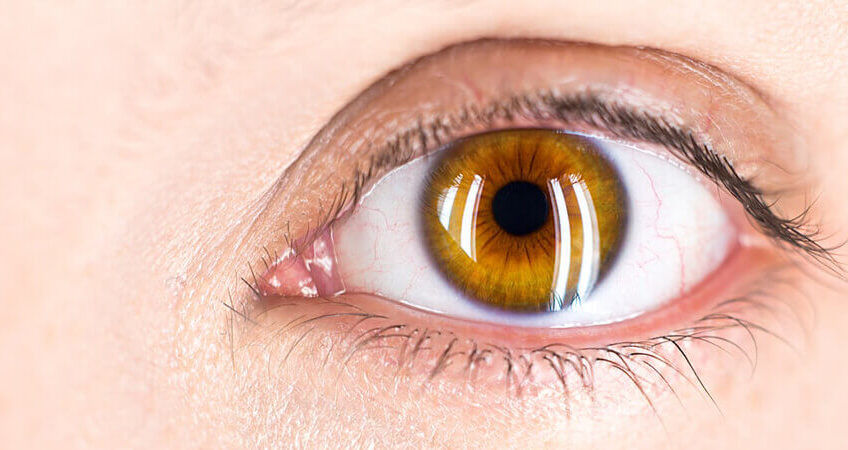Akshi, or eyes, are a gift of God to enjoy the nature. As per Ayurveda, it is an important organ of our body, one among the five sense organs. All Pancha mahanhootas are involved in maintaining the health of the Eye.
- Earth ( Prithvi) : governs the muscular part of the Eye,
- Water (aap) : governs the white area,
- Fire (Tejas) : rules the blood vessels,
- Air (vayu) : governs the colour,
- Space (Aakash) : controls the tear ducts and channels.
Unfortunately, we tend to neglect the most important part of our body. Our answer to the question of whether we spend even an hour a week to improve the health of our eyes, will probably be a big ‘No’. We spent hours in front of TV screen, computer, mobile phone etc, without giving rest to our eyes. We tend to forget that eyes too need exercise as well as rest for its proper functioning.
We mostly pay attention to our eyes only when required. It is human tendency to take health for granted, and then rush for medical care when we fall sick, and lament about our suffering.
Ayurveda says that the general health of a person depends on the proper and balanced functioning of all body parts, along with impact of environment, the genetic structure, eating habits of the person, airborne toxins exposure and the environment the person works.
Eye diseases are rampant today, caused in part by long hours of work on computers, poor eating habits, long and frequent journeys, inadequate hours of sleep, reading small/fine prints for a long period of time, inappropriate head positions while lying on bed, heavy sneezing and even overindulgence in sex.
Working for hours in front of computer or watching television for a prolonged time especially without enough blinking is very dangerous to eyes. It makes the eyes dry and scrappy. Today, the major reason for a large section of children becoming myopic is television.
It is very important that eye ailments are detected in early stages. Early detection helps in faster and better recovery. If treated early, Ayurveda strengthens the nervous system and prevents degeneration of the optic nerves. Even complicated and rare diseases that affect the optic nerve and retina and lead to blindness can be treated with great success by using ayurvedic treatment.
There is a change in the trend today as thousands of people are today resorting to ayurveda for effective cure. Ayurveda treatments are very effective in eye disorders. There are different procedures that are practiced to treat the disorders of eye as well as to enhance their functioning Tarpana, seka, aschyotana, pindi, bidalaka, anjana and shirovasthi are some of the effective procedures. Tarpana is known to be the most effective of them all.
Some of the very common eye disorders are :
Diabetic retinopathy : (Pramehajanya netra roga)
Diabetic retinopathy is damage to the retina caused by complications of diabetes that can eventually lead to blindness. It is an ocular manifestation of diabetes, a systemic disease, which affects up to 80 percent of all patients who have had diabetes for 10 years or more. Recent researches indicate that at least 90% of these new cases could be reduced if there was proper and vigilant treatment and monitoring of the eyes.
The symptoms of diabetic retinopathy:
- Blurred vision and gradual vision loss
- Floaters
- Progressively diminishing vision
- Photophobia
- Shadows or missing areas of vision
- Difficulty seeing at nighttime
Many people with early diabetic retinopathy have no symptoms before major bleeding occurs in the eye. This is why everyone with diabetes should have regular eye exams.
1.Macular Degeneration: (Pitta vidagdha Drushti)
Macular degeneration, often called age-related macular degeneration (AMD or ARMD), is a medical condition that usually affects older adults and results in a loss of vision in the center of the visual field (the macula) because of damage to the retina. It is diagnosed as either “dry” or “wet” forms. It is a major cause of blindness and visual impairment in older adults (>50 years). Macular degeneration can make it difficult or impossible to read or recognize faces, although enough peripheral vision remains to allow other activities of daily life.
2.Glaucoma : (Adhimantha)
Glaucoma refers to a medical condition that causes damage to your eye’s optic nerve and worsens over time. It’s often connected with a clinically characterized buildup of pressure inside the eye. Glaucoma tends to be inherited and symptoms may not appear until later in life.
The increased pressure, called intraocular pressure, can damage the optic nerve, which transmits images to the brain. Glaucoma can cause a permanent loss of vision if damage to the optic nerve from high eye pressure continues. Without treatment, glaucoma can cause permanent blindness within a few years. Once lost, vision cannot normally be recovered, so the emphasis of treatment is primarily aimed at preventing further loss.
3.Retinitis Pigmentosa: (Nakulandhyata)
Retinitis pigmentosa is an inherited eye disorder. Both eyes are involved in this medical condition. If it starts in one eye, the other eye usually develops the same condition in a number of years. Most cases are genetic, inherited in a variety of ways, including dominant, recessive, and sex-linked recessive. However, few cases are sporadic and lack a family history of the disease.
4.Myopia: (Prathama patalajanya Timira 1)
Myopia is a vision condition in which close objects are seen clearly, but objects farther away appear blurred. Generally, nearsightedness tends to develop during childhood as eye continues to grow during this phase. It typically progresses until about age 20. However, nearsightedness may also develop in adults due to visual stress or certain health conditions such as diabetes.
5.Astigmatism: (Prathama patalajanya Timira 2)
Astigmatism is a common eye condition that results in poor vision due to cornea becoming oval in shape. The vision becomes blurred as the light rays do not focus while entering the eye.
In Ayurveda, Many of highly potent therapeutic treatment procedures are described in Shalakya Tantra. The aim of all treatment procedures is to prevent the degeneration process and to restore the vision. The procedures like anjana, nethradhara and tharpanam etc. helps to correct the vitiated metabolism of the cells and to stimulate the regeneration of the retinal cells and optic nerves. The treatment approaches in two steps.
Stage of purification: It aims in cleansing the body at metabolic level and to remove the metabolic wastes out of body.
Stage of rejuvenation: It aims to correct the metabolic functions and to rejuvenate the retinal cells and optic nerves.
Netradhara –
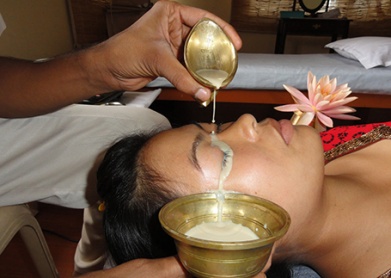
Filtered decoction of the medicated herbs are poured in the nasal canthus of the eye from a height of 2 angula (approx. 4 cm) and for a period of about 15 min. This procedure helps to do clean the channels (Srotas) of the eye and do the aam pachana (detoxification at the cellular level).
Tharpanam –
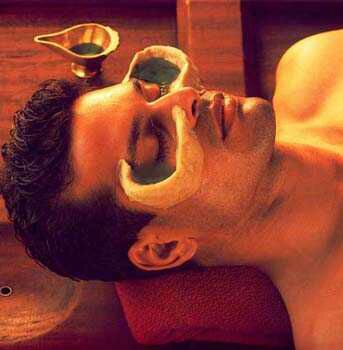
The highly powerful procedure which rejuvenates the eyes. The paste of gram is applied around the eyes which gives the appearance of a dam. The medicated ghee is then poured in the eyes for a time described according to the diseased condition. The active ingredients of the ghee medicine start the regeneration process and the vision is restored.
Sirodhara –

Patient is made to lie on the dhara table. Medicated oil is poured on the forehead continuously for about a period of 45 min. This process gives strength to the nervous system and increases the blood circulation of the optic nerves. It is also effective in many degenerative diseases of the brain and optic nerves. Medicated oils, milk, buttermilk mixed with medicated decoctions are some of the fluids used.
Sirovasty –
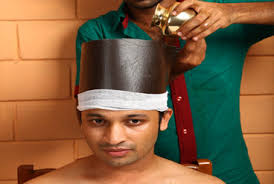
This procedure is more powerful than sirodhara. Medicine is kept inside a leather bag fitted around the head at a bearable temperature for a prescribed time. It also acts very effectively in all degenerative diseases of the nervous system.
Nasya –
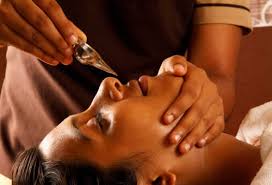
This is a procedure in which medicated oil is poured in both the nostrils empty stomach. The toxins accumulated in the areas above the neck are brought out via this route. Nostrils are the doors to the brain according to Ayurveda classics.
Anjana and Aschotanam –
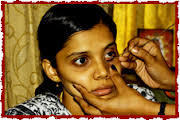
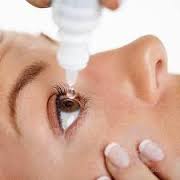
These are the procedures by which medicine is applied inside the eyes.
By adopting ayurveda as a system for the treatment of eye diseases it is not only possible to correct a disease but also to prevent blindness. Ayurveda is always contributing to humanity in its own scientific way in the great mission of moving from dark to light.
Dr. Sreelakshmi Vijay, B.A.M.S
Travancore Ayurveda, Vijayawada

